-
Where You Might Find Mold in Your Kitchen
Mold, which can severely affect your air quality in San Francisco , can show up anywhere in your home, including your kitchen. You may notice mold growing when you have left something in the refrigerator too long. While this kind of growth may be somewhat common, it should never be allowed because it can still affect your health through the air quality in your kitchen and refrigerator.
Mold simply needs the right food, warm air, and moisture to grow. These needs can be easily met within a kitchen. If your kitchen is often humid, possibly from steaming pots, then you may attract mold. Mold could be growing under your cupboards or in between appliances located around the stove. This should be cleaned up and discouraged from growing as it can affect the air quality while cooking over a stove. Be aware that mold can also grow in your sink drain. This is the perfect environment for mold growth, and you may quickly notice a change in the smell and air quality every time you pass by the sink. Consult your air quality professionals and remediation experts to remove the mold growth.
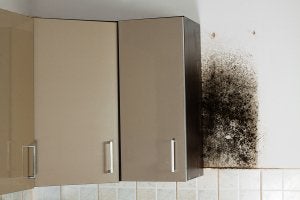
-
What Science Says About Indoor Air Quality
Indoor air can be as much as ten times more polluted than the air that you breathe outdoors. To take a look at what the latest science says about indoor air quality, check out this video.
When chemicals and other forms of pollution are brought indoors, they can become concentrated in your indoor spaces. Fortunately, by hiring a company that offers air quality testing near San Francisco , you can make sure that your indoor spaces are free of black mold and other forms of pollution. Indoor air quality inspections are particularly important before you complete a renovation or construction project. By taking the time to test your air quality before your remodel, you can rest assured that you are completing a healthier home renovation.
-
Get the Facts About Mold Allergies
Mold is a common cause of nasal allergies. Since there are many thousands of mold species, mold can be found throughout your indoor air. If you are sensitive to mold, you may find that you develop coughing, wheezing, and other respiratory ailments when you are indoors. To protect your family from the dangers of mold allergens, you may want to consider scheduling a mold remediation service for your property. If you have mold in your house, your contractor can provide you with a variety of mold remediation services. With mold testing near San Francisco , you can also determine whether mold is the source of your indoor allergies. To learn more important facts about mold allergens and mold testing, be sure to watch this video from Allergy, Asthma, & Sinus Center.
-
Should You Have a Bacteria Test Before Purchasing a Home?
When you are getting ready to buy a house , you may want to consider scheduling a full house inspection. A company that offers mold inspection and home inspections in San Francisco can determine whether a house is a safe space for you and your family.
One of the most important types of test that you may want to schedule before you buy a house is a bacteria test. If bacteria are present in a home after a sewage spill or other type of emergency, the health and safety of your loved ones could be at risk after you move in. Bacteria can cause serious illnesses when they are not treated and properly removed from the home. Fortunately, a home inspector with bacteria testing experience can perform a thorough test for your potential property. By taking a look at whether a house has any bacteria contamination, you can embark on buying a house with total confidence.

-
A Look at the Benefits of Scheduling a Mold Inspection
If you suspect that you have mold in your house in San Francisco , it’s important to hire an expert in mold remediation to perform a professional mold inspection. Symptoms of mold exposure can be incredibly serious, particularly exposure to toxic black mold. Here is a look at the key benefits of hiring a mold remediation expert to perform a mold inspection and black mold testing in your home.
Prevent Serious Symptoms of Mold Exposure
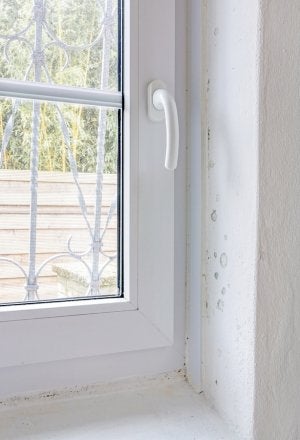
Mold symptoms, particularly black mold symptoms, are dangerous, and can even be life threatening. If you or anyone in your household is already ill or suffers from an autoimmune disease, you’re at a higher risk of dangerous symptoms of mold exposure. Symptoms of mold exposure can be as mild as allergies, skin rashes, and common cold symptoms. Black mold symptoms can include serious respiratory problems and infections, asthma complications, chronic headaches and fatigue, dangerous neurological problems, and toxic mold syndrome.Improve Indoor Air Quality
When the mold in your house becomes airborne, your indoor air quality significantly declines. Mold exposure and mold symptoms occur when mold spores are inhaled from the air and settle in the lungs or nasal passages. A mold remediation expert can test your indoor air quality for signs of mold spores. He can also perform an extensive mold inspection to look for signs of mold growth throughout your home. If he finds mold in your house, he will perform professional mold testing, including black mold testing, to see if you are at risk for toxic mold exposure.Reduce Your Risk of Structural Damage to Your Home
Mold growth occurs in areas that are damp and warm. This means that mold might grow in areas of your home that aren’t immediately visible, such as behind walls or wallpaper, behind or underneath plumbing fixtures, in flooring or ceiling tiles, and behind or underneath appliances. Water damage and mold growth can cause problems with wooden structures, insulation, and electrical wiring in your home. A mold inspection and mold remediation will reduce or prevent serious structural damage. -
Getting Rid of Household Mold
Not only is household mold an unpleasant thing to live with, but it also can pose a serious health risk, especially for those who suffer from respiratory issues such as asthma or COPD (chronic obstructive pulmonary disease). If you have mold growing in your home, contact an experienced professional who specializes in mold inspection and mold remediation in San Francisco.
One effective way to get rid of mold is to reduce the amount of moisture inside your home. Watch this video to find out what else you can do if you suspect mold in your home, or if you’re experiencing symptoms of mold exposure.
-
Understanding the Mold Testing Process
No one wants to live in a home, or work in an office, that is filled with mold. Luckily, there are ways to test for mold. If you suspect that you may have mold growing in your home, don’t hesitate to contact a mold remediation professional in San Francisco to schedule an inspection and a mold test .
Common Types of Mold Found in Homes
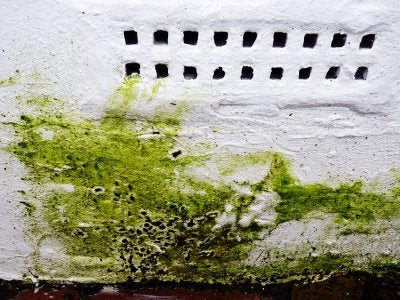
Knowing how to identify mold is your first line of defense against it. When mold is growing out in the open, it’s pretty easy to recognize—it looks like dark-colored fuzz, usually occurring in clusters or spotted patches speckled across a surface. There are three types of mold that are commonly found in homes: Aspergillus , Cladosporium , and Stachybotras . The first two are relatively harmless, mainly responsible for minor allergic reactions and lung issue. Stachybotras , on the other hand, can really be cause for concern. Known as toxic black mold, Stachybotras can pose a serious health risk, and may send you to the emergency room if you’ve been continually exposed to it for a steady period of time. If you have black mold in your home, you need to call a mold remediation expert immediately.Testing for Mold Using Store-Bought Test Kits
Ideally, when testing your home for mold, you want to perform the test before a deep cleaning, and then again afterward to make sure that you’ve eradicated the problem.You can readily purchase a mold test kit at your local hardware or home-improvement store. These kits are fairly straightforward to use, usually requiring homeowners to send prepared samples to a laboratory. They range in prices depending on the companies and how involved the tests are. Be forewarned – these test kits have been known to be unreliable.
Hiring a Professional
For peace of mind, hire a professional mold specialist to test your home. Only a trained technician has the knowledge and proper equipment to perform a comprehensive and accurate test. -
A Look at the Most Common Types of Household Mold
Mold is everywhere, but the last place it should be is inside your home. Although there are only a few types of mold that can cause very serious health problems, no amount of indoor mold is good for or your family. Unfortunately, considering how humid the Bay Area and the general condition of the homes and buildings in the vicinity, household mold is a common problem in San Francisco. To protect your health and the health of your family, schedule mold testing with an indoor environment testing company in the Bay Area. Technicians will perform a number of different tests to confirm or deny the presence of various different types of harmful indoor molds, including:
Aspergillus
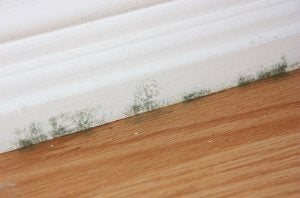
Aspergillus is one of the most common environmental molds. In fact, the Centers for Disease Control and Prevention claims that most people breathe in these fungal spores every day. Although Aspergillus exposure isn’t harmful for people with healthy immune systems, people with weakened immune systems can develop sinus or lung infections which can spread to other parts of the body.Cladosporium
Another common mold in the environment, Cladosporium is usually found on plants and other organic matter outdoors. Indoors, this type of mold can grow in areas where moisture is consistently present, such as in bathrooms and laundry rooms. Although Cladosporium rarely causes human illness, it is known to cause several different types of infections, including brain infections.Stachybotrys Chartarum
The most notorious (and dangerous) of all common household molds, Stachybotrys chartarum is a greenish-black mold that typically grows on materials with a high cellulose and low nitrogen content, such as fiberboard, gypsum board, and paper. Also known as “ toxic black mold ,” Stachybotrys chartarum can cause nausea, vomiting, bleeding in the lungs, and more serious health effects with prolonged exposure. -
Removing Mold in Your Attic
Are you experiencing mold symptoms but having trouble finding the source of them? If your attic isn’t insulated properly, the warm air you use to heat your home in the wintertime could be getting trapped up there and causing mold to grow. Watch this video to see how professionals complete mold remediation near San Francisco in attics.
When warm air is allowed to enter your attic and hit your cold roof during the winter, a frost will often appear on the inside of your roof. This frost can create the perfect environment for mold to grow quickly, which will eventually cause mold symptoms in those who live in your home. A mold testing company can test for the mold and help you get rid of it. You should then insulate your attic in order to stop the mold from returning.
-
A Closer Look at the Most Common Types of Household Mold
There are more than 100,000 types of mold located throughout the world, so if you own a home, there’s a good chance that you will have to deal with at least one of them at some point. While many types of mold are non-toxic and won’t cause any health-related problems, you should keep an eye out for mold symptoms and remove mold as quickly as possible to avoid the risks associated with it. Here are the most common types of mold that homeowners will find during a mold inspection in San Francisco .
Aspergillus
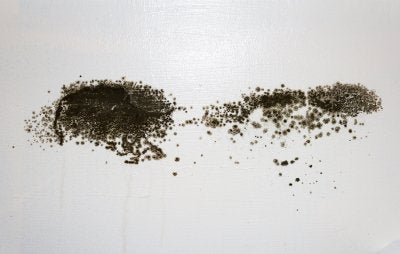
Do you have bad allergies? If so, you’re going to want to monitor the presence of this type of mold in your home. It is most commonly found inside of air conditioning systems as well as on foods, and it can cause severe allergic reactions for those who have allergies or diseases of the lungs. Because it can grow inside of air conditioning units, it can also spread throughout homes fairly quickly and cause problems for those with allergies.Cladosporium
This type of mold is not toxic to humans but, much like aspergillus mold, it can cause allergic reactions in some people. It is black and green, looks a little bit like pepper, and grows on everything from air ducts to the back of toilets. It has been known to cause watery eyes, sore throats, and other flu-like mold symptoms in some people.Stachybotrys Atra
This is by far the worst type of mold that you can find inside of your home. It is commonly referred to as black mold, and it can cause a series of very serious health issues. Specifically, black mold can cause bleeding of the lungs and, in some cases, it can even lead to death. If you even think you might have black mold in your home, you should have a mold test done immediately and then work to remove it from your home. Mold remediation should get rid of it and make the air in your home clean again.
RECENT POSTS
categories
- Uncategorized
- Lead
- Mold
- San Francisco Mold & Asbestos Removal
- Indoor Air Pollution
- Mold Remediation
- Asbestos
- Safe Air Fast
- Mold Inspection
- Remediation
- Bacteria Testing
- Asbestos Testing
- Abatement
- Lead Testing
- Sewer Line
- Lead Survey
- Mold Testing
- Air Quality Inspection
- Home renovations
- Allergies
- Renovation Contractor
- Infographic
- lead paint
- Air Quality
- Air Quality Test
- Mold removal
